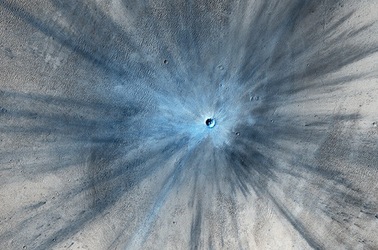This article is more than 1 year old
Ground control to 2014: A year in Space
Four-legged landings and history-making comet-chasers
The moment of truth
Finally, though, the moment had arrived, and El Reg was in Darmstadt to see it.

AWESOME SPACE PIC 1: Spiral galaxy ESO 137-001. Credit: NASA/Hubble
The landing attempt was frequently described in colourful metaphors, like trying to land a feather on a speeding bullet, and it was always touch and go whether the plucky little probot could make it. The plan was to launch from Rosetta and then passively drop Philae onto the comet, using a harpoon to latch on when it got close and ice-screw legs to stay on once it had landed. In order to defeat the comet's negligible gravity, Philae needed a gas thruster on its top to counteract the force of firing the harpoon.
The decade-long project looked like it might be over before it began when mission control discovered that pivotal cold gas thruster system was down, but ESA had come too far to back down now and the launch was given the go.
The probot said goodbye to its mothercraft Rosetta without a hitch, separating and heading on what appeared to be the right trajectory to hit Site J, now known as Agilkia.
Tensions were high in the control room as ESA and DLR teams had to wait through the 30 minute delay for the message to get back, but finally, it was elation and relieved grins all round.
“Yes, yes, YES!” said Andrea Accamazzo, Rosetta flight director. “We see the lander sitting on the ground!”
At first it only mattered that the lander had reached the surface the comet, for the first time in human history, but it quickly became apparent that all had not gone as smoothly as the boffins hoped. As it turned out, the harpoons meant to fire out and secure the probot to the surface had failed to fire.
Then, when Rosetta's cameras were having trouble finding Philae and the first pictures came back from the lander, the teams realised that the history-making craft had landed more than a few times as it bounced across the surface of the comet.

AWESOME SPACE PIC 2: A fresh impact crater on Mars snapped by the
Mars Orbiter's High Resolution Imaging Science Experiment (HiRISE).
Credit: NASA/JPL/University of Arizona
While they were relieved that Philae had managed to find a stable resting spot after bouncing off the space rock, the disappointment was in where it had ended up. Because it was now in the lee of a rock formation, the craft was finding it hard to get sunshine on its solar panels. The Sun was supposed to help top up the little lander's batteries to extend its lifespan beyond the initial 60 or so hours provided by the charge it already had.
With the probe's power running out, the scientists had to make some tough choices about which scientific tests Philae would have a chance to run. Most importantly, they needed to decide if it was worth the risk of using the drill to grab samples that might prove the idea that life on Earth was seeded by comets.
In the end, Philae didn't let them down. The fridge-sized craft managed to get all of its housekeeping and science data back to Rosetta, including the information from a drilled sample, and push itself up four centimetres to rotate 35 degrees in the hopes of catching more rays. But the plucky probot then slipped into standby mode, a condition it won't come out of unless it gets more solar power as the comet nears the Sun.
It may have seemed like Rosetta was the only show in town this year, but there were other things going on in space. Rovers were still trundling around on the surface of Mars, breaking records and taking samples.
